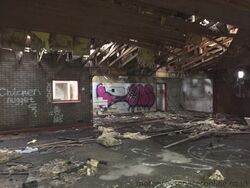The History of Little Chef
Once a firm favourite of many road users, Little Chef was started in 1958 by British Caravan manufacturer Sam Alper (Sprite Touring) and catering boss Peter Merchant (Gardner Merchant), after they returned from a trip to the USA, where the two had been promoting their businesses. They took inspiration from the success of the American diner chains which used compact, transportable structures that would be moved around.
In Britain, out-of-town diners were always aimed at lorry drivers, but their experience in America inspired them to develop a version of it that would be aimed at the wealthier people who could be found in cars - namely families and businessmen.
This page charts how their idea grew to be giant, and how it all became too much.
Reading
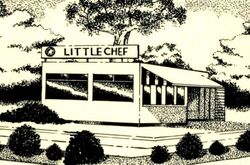
One particular diner they had seen in Leedy, Oklahoma, was called 'Little Chef'. It had been manufactured by Valentine Industries of Wichita, Kansas.
The two decided this would be the perfect basis to start their own chain. The first branch was opened on Oxford Road in Reading, in the car park of the former Rex Cinema. It was a waitress-service restaurant with 11 seats, built in a prefabricated cabin painted in red and white.
Allen Jones was the company's managing director. Little Chef would fall under Merchant Group, a Lockhart company. The new chain was described as an Americanisation, albeit with a British twist.
Trust Houses: A Solid Start
The chain grew by opening branches alongside main roads, including North Muskham, Astley, Fourwentways, Mirfield, Alwalton, the original Hogs Back, Bagshot and Penmaenmawr. After a couple of experiments, a settled design became established using pre-fabricated buildings with seating for 20 people.
Peterborough Telegraph review, 1960
They would normally be built on land leased from an existing petrol station, and boasted on-site car parking. This made Little Chef an attractive option for people who didn't know the area.
Trust Houses purchased Merchant Group in 1961, and they assumed responsibility for Little Chef. With their backing, Little Chef was able to expand even faster, and launch more advertising and promotional material. Here they had another advantage: each advert was effectively promoting numerous branches in one go, whereas any independent diners who were trying to compete with them only had one branch to advertise.
In 1965, the building style changed to brick-built, with a typical capacity of 40 diners. At this point the chain was able to introduce centralised staff training, and standardised décor. This was the start of their commitment to consistency, which would encourage repeat custom and reduce operating costs.
Little Chef had opened 26 sites in its first 10 years. Their strength and power would now help them secure even more branches. One of the more unusual sites had opened in Regent's Park.
Their long opening hours gave them another edge over any independent rivals. The menu served steaks, salads and sweets.
The fast expansion of Trust Houses caught the attention of Fortes, who purchased Trust Houses in 1970. While the merger was a key business move, internally it was an unhappy one, with reports of clashes between the two business styles. After many public accusations of hostility in the boardroom, Trust Houses management began to be outvoted on business decisions and opted to move on. During this period, Allen Jones left to create Welcome Break, while Trust Houses director Michael Pickard left to create another rival chain, Happy Eater.
Trusthouse Forte: The Favourite Child
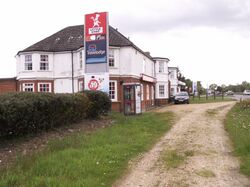
Now Trust Houses was part of the large Fortes empire, the combined firm was keen to dominate the highways, especially routes which were used by families on holiday. Forte wanted a Little Chef every 25 miles along these roads, and committed to opening 40 new branches a year. Customers didn't just keep coming back to a Little Chef restaurant they'd been to before - they fell into a habit of finding one on every journey they made.
Frustrated by difficulties with the planning system, in 1970 Forte sent teams of people out to sample existing transport cafés and, if they liked what they saw, they offered the owners considerable sums of money to sell and move out within a week - some reckon they were offered more than 10 years' worth of takings. By 1972 over 50 restaurants had been opened in this fashion, bringing the number of Little Chefs to 100. These came in a variety of shapes and sizes including old pubs, hotels and garages.
At this point, Forte experimented with some self-service restaurants. A considerable amount was spent on marketing, aimed at attracting families. A short-lived city centre chain Big Chef was introduced in 1972.
When built from scratch, restaurants had flat roofs and large windows. They were often advertised as "Little Chef Grill". A cup of tea cost 6p, coffee 9p and the Early Starter breakfast cost 45p.
Forte stressed the importance of good site selection, and good local management. Increasingly existing buildings would be demolished and replaced by a new-build. A franchising system was considered, but ultimately not pursued. Admin was brought in order in 1975 when each brand was assigned its own unique unit number, a system that would be used for the following 20 years.
Not content with restricting themselves to the UK, four restaurants were opened in France as Le Chef. Forte suggested they could show the French "how to make a profit", and planned 100 outlets across France, West Germany, Spain and the Benelux countries. By 1977 there were now 174 restaurants, but not every branch was pulling its weight. Some restaurants closed, including the few French ones that ever opened.
Motor Chef
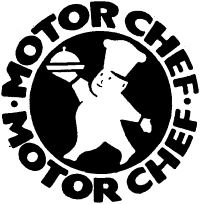
See also: Motor Chef
Proud of the Little Chef chain, Trusthouse Forte decided to take their motorway services and turn them in to Little Chef's bigger cousin. To do this, they named the services Motor Chef, and copied some of the styling.
This was later undone, but instead branches of Little Chefs were introduced to Trusthouse Forte motorway service areas. This started with Charnock Richard in 1982 and many more followed.
In 1986, the motorway Little Chefs were described by Which? as "rather old-fashioned". However the Thames & Chilterns Tourist Board praised the chain for its "very high standards of cleanliness and presentation". Other commentators remarked on their cleanliness and simple business model.
Little Chef themselves said that their priorities were "value for money", "civility" and "maintaining a smart menu". On average customers lived 13 miles from the branch they were visiting, suggesting there were a lot of locals popping in, many of whom would build up a rapport with the staff. At this stage almost all of Britain was within 20 miles of a Little Chef.
After the Department of Transport created green road signs for A-road service areas in 1982, Forte were keen to get these for as many Little Chefs as possible. Generally this only applied to the new breed of larger sites that had hotels and petrol stations, but some, like Newby, managed to slip through with just a restaurant. Around half of the signposted A-road service areas were Little Chefs, meaning they were now getting regular customers who weren't even planning to stop there.
Little Chef Lodge
See also: Little Chef Lodge
Forte decided to pair some of its flagship Little Chefs with budget hotels. These were known as Little Chef Lodge, and took advantage of the demand for a cheap place to stay and the fact that working in conjunction with Little Chef would help keep costs down. It was one of Britain's first budget accommodation brand.
In 1988, all 28 Little Chef Lodges became Travelodge, beginning a long relationship between Little Chef and Travelodge.
Imperial Group

In 1986, Little Chef was the market leader with 220 restaurants, and reported a pre-tax annual profit of £28million (around £82million in 2025) with 300,000 customers a week. Forte continued to study major routes to look for new openings, and felt it was safe to reduce the spacing between each restaurant from 25 miles to 8 miles. Once they crossed 300 branches, they had their sights set on hitting 400.
Forte purchased a packet of roadside chains from the Imperial Group, which gave them access to Jones's 85-branch Happy Eater. Jones quit and started another rival chain, AJ's, though it wouldn't have the market power that Little Chef and Happy Eater had.
With an investigation from the Monopolies and Mergers Commission, Forte insisted they were committed to growing both Little Chef and Happy Eater, with Happy Eaters being more upmarket. Even so, some planned Happy Eaters changed to Little Chef. The Monopolies and Mergers Commission concluded that the Happy Eater/Little Chef dominance of the roadside restaurant market was no threat to public interest, arguing that it was easy to enter in the industry.
Trusthouse Forte spokesperson, 1987
Although Little Chef marketed itself as a family brand, insiders revealed that it was actually catering for anybody left out by the current market, meaning it was mostly serving businessmen. New-builds had a pitched roof with red-brick walls.
Kelly's Kitchen was acquired in 1990, and Forte converted all 18 of their restaurants to Little Chef as well as inheriting a number of outstanding planning permissions. These were large, tall buildings. Little Chef's restaurants now included a number of airport and town centre sites; Forte said that they were now very interested in urban areas.
Aware that many customers are looking to get in and out again quickly, in 1989 Little Chef began trialling coffee shops. This was rolled out nationwide in 1994 as Little Chef Coffee Stop. Some of these had their own units, while others occupied a smaller area. Four Little Chef Expresses were also introduced, which aimed to take on the fast food market.
A 1991 visit by the Daily Mirror criticised Little Chef for being more expensive and having a smaller menu than its Happy Eater sister. It was praised for its free baby meals, good vegetarian selection and an "amazing variety" of pancakes. A cup of tea cost 77p (around £2 in 2025), a burger, chips and a dessert cost £3.05 (around £7) and maple syrup pancakes cost £1.50 (£3).
Little Chef continued to stand out from most other restaurants because of its consistency. Everything, down to the layout of the plate, was supposed to match. As a result, what made each branch unique was the staff working there, and it was more of a customer service job than a catering role.
Continental Expansion
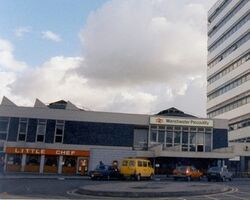
Starting in 1992, Forte decided to really push the Little Chef and Travelodge brands.
First, the pair were introduced to Ireland, in partnership with Aer Lingus. 15 sites were planned across tourist hotspots, though only the first two opened. Then, under a deal with Spanish oil and service station company Repsol, they opened two sites in Spain, where a further 50 were planned.
The Spanish sites used 60% of the British Little Chef menu, with local additions such as brocadillo omelettes, chicken with salsa and gazpacho. The move was part of Forte's aim to make their business more resistant to turbulence in the British economy, and had been waiting to announce a partnership with Repsol for several years. They didn't rule out taking Little Chef to more countries, generally those frequented by British roadtrippers, but no plans were drawn up.
In Northern Ireland, two major sites were planned, but other events would overtake them before they could be built.
Back in Britain, Granada sold three hotels to Forte, which became large Little Chef/Travelodge combinations. An additional site was acquired from Pavilion.
New-builds had a grey-pan tiled roof, with lightly-coloured bricks and large windows. Forte were finding Little Chef more lucrative than Happy Eater, so began to convert some.
Blue
In 1994, Forte introduced a new blue and white colour scheme for its restaurants, inside and out. Examples include Halkyn, Doncaster, Northop Hall and Huntingdon.
The new colour marked an effort to attract more evening diners, with new furniture and air conditioning.
Granada: Growth and Concerns
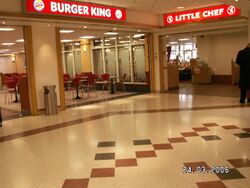
In 1995, Trusthouse Forte knew that a hostile takeover from Granada was coming. They had a bad year, which they blamed on Little Chef performing worse than expected.
Forte tried to offload Little Chef and Happy Eater to Whitbread, but Granada got there first. Before beginning the takeover, Granada executives visited around 25 Little Chef restaurants. They described them as "tired" and pointed out that they were no longer popular with the under-30s, but Granada loved a good brand and believed Little Chef had a lot of potential if it could move closer to the fast food market.
Granada suggested that the entire Forte group needed to reduce its costs. They converted all of the Happy Eaters to Little Chef, as well as converting the AJ's restaurants they already operated. Granada introduced Little Chef to most of their own service areas, meaning it was now at over half of the UK's motorway service areas. The following year, Granada reported that Little Chef's operating profit had risen by 48% (with a £160million turnover - around £323million in 2025), which they attributed mainly to reduced operating costs.
Over the summer of 1996, Granada introduced a number of partner brands to Little Chef: Burger King, McDonald's, Harry Ramsden's and La Brioche Doree. Burger King proved the most successful (where sales nearly doubled) and Granada immediately added a Burger King to over 100 branches of Little Chef, either inside the restaurant or in an extension next door. These were called "combi" sites. One of several other trial interiors was created by Hosker Moore & Kent at Reading.
Meanwhile, Granada introduced a new process of menu development, which involved making minor changes every six months and focusing more on healthy dishes. They launched a new incarnation of Little Chef Express, which would be a new self-service fast food brand. Granada pushed this to a whole new host of locations including food courts at railway stations, ferry terminals, airports, shopping centres and ferries. Little Chef finally broke into Northern Ireland as Granada opened a number of units at Belfast Central station. Coffee Stop was changed to Nescafé Coffee House.
Granada were forced to sell Welcome Break in 1997, and to remove all their brands from those services. Welcome Break replaced the Little Chefs with Red Hen. Even so, this made barely a dent in the size of Little Chef, as Granada converted more AJ's and their own Rock Island Diners. The archaic but personable unit numbering system was scrapped.
Peak Performance
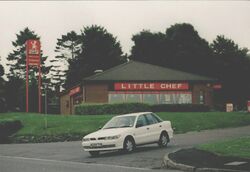
A new building design launched at Bluebell Hill allowed restaurants to be assembled in just six weeks. With the help of this, the total number of Little Chefs had reached its peak of 439 by 1999 (map). This reflected in an intense monopoly on many major A-roads, where previous rival restaurants had all been taken over. Granada did continue to look for new locations, saying they were "backing the winning brand", but not many were found.
Granada may have been saying all the right things, but it was easier said than done. The wider Granada business was keen to return value to its shareholders, and Little Chef, with its solid monopoly and loyal customers, was seen as the cash cow that could be depended on. As a result, investment was held off, prices were "increased enormously" and everything followed a rigid policy. The head office was merged with Granada's at Toddington services. New Little Chefs were often opened on a budget, with little effort made on the dining atmosphere despite a trial 'modernised' branch opened near Reading. As with any large firm, some branches were also let down by internal bureaucracy.
There may have been issues during the Forte era, but many believe that it was here that the seeds for trouble were sown. Customer and staff satisfaction would soon begin to drop and struggle to recover. In particular, it was an embarrassing year for Little Chef as the BBC's Watchdog took them to task over their menu's claim that the food is "freshly cooked", after revealing that some of it was reheated.
Finally a franchising agreement allowed two Little Chefs opened at service areas ran by Granada's rivals, at Derby South and Cullompton. The Spanish branches closed, but three more Irish sites opened. This time, instead of tourist hotspots, the new Irish branches were placed by main roads in cities.
Compass
See also: Little Chef Choices
When Granada was acquired by Compass, this meant a whole host of brand names were now sister companies. To take advantage of this, Caffè Ritazza, Upper Crust, Wiseguys Pizza and Harry Ramsden's were combined with Little Chef to create branches named Little Chef Choices. Choices was accompanied by a thorough refurbishment which aimed to attract more evening diners.
Compass also registered the name Little Chef Classics, but this doesn't appear to have been used.
Perhaps a key omission from that food court concept was McDonald's. McDonald's didn't really do franchising, but over the previous 10 years they had built up a network of restaurants in the sort-of places where Little Chef would normally build - in fact sometimes the two were next-door to each other. Whereas Little Chef had always focused on appealing to children, McDonald's were now the brand children were talking about. While McDonald's initially had a 'downmarket' image among some parents, Little Chef's own lack of investment wasn't helping it stay ahead.
By 2001, Compass had reduced the number of restaurants to 406. Market saturation, changing customer travel patterns and reduced consumer demand appeared to be factors. They said that "bigger was better", and that a number of quiet restaurants were going to be replaced by one busy one. This would also help with maintenance.
Compass's roadside division had its hands full managing Moto, and while they were proud of their range of brands, they felt that Little Chef didn't fit with the rest or with the Compass business strategy. Unpicking all the various Granada divisions was always going to be difficult, and a lot of inconsistencies emerged. At Monmouth, Little Chef would now be responsible for running the whole complex, including the petrol station.
There was some debate about whether it needed to be sold with Travelodge, but Compass decided they were too difficult to unravel and sold them both together. 397 branches were sold.
While all this was going on, Little Chef scored some positive headlines, with the news they would be installing TVs in 350 branches, ahead of the World Cup.
Permira: The Unwanted One
In December 2002, Little Chef and Travelodge were purchased by Permira of Canada, who created a new company called Travel Lodge Little Chef. Many of the motorway restaurants continued to be owned by Compass, under a franchise agreement. In total there were 368 Little Chefs sold, as well as 220 Travelodges. Little Chef was receiving 21 million customers a year.
Speculation was rife that Permira only wanted Travelodge and had no interest in the Little Chefs that did not have a hotel. Several staff members complained in the press about skeleton staffing, long working hours, poor resources and poor management - arguing that Permira's aim was both to encourage resignations and to justify closing branches.
With Little Chef separated from Compass, it was no longer viable for Little Chef to use any of their brand names. Permira did suggest they were keen to keep the Moto sites open, though.
Between 2003 and 2005, almost 150 restaurants were closed, mostly those without ancillary facilities or with intensive competition. Permira spent a year separating the administrative aspects of Little Chef and Travelodge, making a sale likely. The chief executive was even quoted saying he was preparing a management buyout, in case Permira suddenly pulled the plug on Little Chef.
One insider reported that Permira had been hoping to make a profit by quickly selling Little Chef, but they had underestimated the "troubled state" of the business. The finger was pointed at the previous two owners for failing to develop the brand, failing to motivate staff and failing to keep an eye on the figures. In an era where customers were becoming increasingly time-conscious, Little Chef had earned itself a reputation for very slow service.
People's Restaurant Group: A Poisoned Chalice
See also: Coffee Tempo!
Permira quickly sold Little Chef to People's Restaurant Group for £52million in 2005 (around £90million in 2025). Where Little Chef and Travelodge had operated side-by-side, Little Chef would now rent their building from Travelodge, a relationship that would soon become tense, as the two still shared some utility connections. In order to fund the deal, the remaining 64 restaurants that weren't attached to Travelodges and therefore still owned their own land sold this land to Arazim for £60million (around £104million).
People's Restaurant Group's plan was to improve customer faith by emphasising the Britishness of the brand, reducing the association with unhealthy food and by announcing a nationwide "price crash", which saw most meals reduced in price by half with a smaller menu launched in November 2005 which aimed to speed up service speeds by focusing on the most popular items. People's Restaurant Group founder Laurence Wosskow personally visited nearly every branch, and was described as a big fan of the brand.
Noting road users' love for coffee, £1.1million (around £2million in 2025) was spent on branding Little Chef's coffee offer as Coffee Tempo!, with plans to invest heavily in the 'grab and go' concept. He described his vision of the company having around 100 larger branches, each with their own coffee and Burger King units.
The Irish branches were closed in 2005, as they were only there to support the Travelodges. The two Dublin restaurants became 'Metzo' (now 'Travelodge Bar') and the three others became Eddie Rocket's franchises. Most of Little Chef's Burger Kings were closed too, saving on franchise fees but losing the customers that Burger King brought in.
The following year, Laurence Wosskow suffered from health problems and there were fears that his missing energy is could affect Little Chef. Meanwhile the price crash hadn't attracted enough people through the doors, so profits were falling and Little Chef's new commitment to paying rents had increased operating costs. Wosskow commented that the poor summer weather ruined their busiest trading season. Concern was also raised that investment had focused on the wrong areas, with the remark made that Little Chef had been standing still. In short, the money had stopped coming in, and nobody knew what to do.
That winter it was announced that Little Chef was on the verge of falling in to administration. On the afternoon that Little Chef did fall in to administration, People's Restaurant Group agreed to sell 196 of its 234 restaurants to venture capital group RCapital for less than £10million (around £17million in 2025).
The new owner's role would be to salvage the potential of what it had. Administrators PricewaterhouseCoopers were tasked with finding a buyer for the remaining 38 sites, but these did not trade as Little Chefs. The rate of closures meant furniture couldn't be removed from the branches, because there was nowhere to move it all to.
RCapital: Bold Ideas
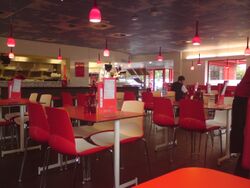
See also: Heston Blumenthal
For 2008, Little Chef wanted to celebrate its 50th birthday, and planned a marketing campaign to raise its profile. The campaign was powered largely by enthusiasts, as successive sales had caused Little Chef to lose all its own historical records.
A campaign titled 'Bring Back Little Chef' saw a roadshow hold events in a number of British high streets. Meanwhile four former restaurants reopened, with the target being to get the branches from 193 to 200. There was a renewed sense of optimism.
Little Chef recruited Heston Blumenthal to redesign its restaurants, and star in a documentary about the brand. Following his work, three restaurants were redesigned, with ten more lined up. It was a publicity project that clashed somewhat with Little Chef's image. The refurbished Popham received national attention and had a huge buzz about it, but it remained very different to the rest of the company and there was no chance of the other sites changing.
The motorway operators had been ending Little Chef franchises, and in 2010 the last motorway Little Chef at Toddington closed. These had been extremely profitable for Little Chef, but the motorway operators believed they could make more money for themselves elsewhere.
Throughout 2009 and 2010, more unprofitable restaurants closed, bringing the total down to 162. With so many branches going, some staff resorted to any any underhand method possible to keep their branch appearing profitable. One of the more unusual closures was Peartree, a large site where Little Chef were priced out by a rival who offered the landlord a better arrangement.
Even so, with the company having sized down, director Ian Pegler announced he had made the overall firm profitable again.
Asset Management
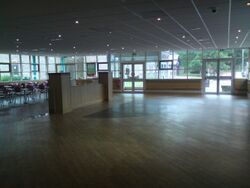
See also: Wonderfully British
In 2011, ten restaurants received a thorough refurbishment, designed to bring them in line with Blumenthal's work. Like Blumenthal's, these received excellent feedback, although it didn't last.
In October 2011, Little Chef became the first company in the UK to introduce a nationwide network of electric vehicle charging points.
The total dropped to 159. Ten of the franchised Burger King sites lost their adjoining Little Chef, leaving only the Burger King franchise. Much of the company's management was outsourced, and the head office was closed.
A dramatic twist came in 2012. Little Chef announced that a further 67 of its restaurants would be closing because they were unprofitable, with Little Chef commenting that they had been trying to contend with "uncompetitive rents". Their theory was that with only 94 restaurants left, these could easily be refurbished and maintained, and that new restaurants with better arrangements could be opened.
On the day of the announcement, Little Chef spent the day as the top trending topic on Twitter, as people discussed the chain and the 500 job losses. This was how most staff learned the news; they arrived the next day to find their branch boarded up with their possessions inside. For those who weren't affected, every day would now be a fight to survive, and one week of poor trade could be all it took to have the branch deemed unviable.
Some of those which closed had only recently re-opened. The total actually dropped down to 119, plus the two Burger King-only franchises. Many of these were purchased by Starbucks franchisees.
Further changes that spring saw the figures drop to 111 restaurants, plus five Burger King only sites. Work started on the first of refurbishments, which went without a Good To Go offer. Instead, Coffee Tempo!, which by now had been scaled right back, was replaced by Little Chef Express.
By Autumn, another wave of closures had been announced, leaving 80 restaurants and 5 Burger King-only franchises. Insiders claimed that only about 20 of these restaurants were making a significant profit. Running costs for the remaining branches were increasing dramatically, as suppliers and utilities would no longer offer favourable rates, as they thought Little Chef was an unstable an unreliable partner. The company itself now had very little assets left to its name.
To tackle the torrent of negative headlines, Little Chef announced they would be bringing back franchised restaurants, and opening more Little Chef Expresses. They had talked about reopening motorway branches.
Kout Food Group: Fattening The Goose
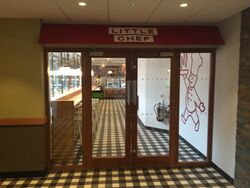
In April 2013, RCapital announced they would be selling Little Chef. They described their progress with the company as "our biggest and longest turnaround in nine years", though some staff felt their own contribution and losses had been overlooked. Costa, Starbucks, Moto and Welcome Break were all said to be interested, but instead it was sold to Kout Food Group.
Kout purchased 78 Little Chefs and 5 Burger King-only franchises, leaving two restaurants at Sutton Scotney which were kept by RCapital until Roadchef purchased them.
Kout Food Group saw their role as being to pick up a struggling chain and increasing its value. Good To Go was officially withdrawn, and some staff felt that the writing was on the wall. Other cutbacks included ending the playing of music in branches, and making staff pay for their uniform. All sites had to submit their own business plan.
In October 2013, Kout announced they would be opening more Burger King franchises at existing sites. These were mostly branches which had already lost a Burger King some time ago. They also encouraged their restaurants to hold community events during December 2013, as part of Little Chef's 55th birthday.
Kout wanted to increase the rate of refurbishments. However by the summer of 2014, more branches had closed, bringing the total to 73 restaurants plus the five Burger King-only franchises. Many staff were still loyal to Little Chef, but fed up of how it had been treated.
Of those that remained, Kout refurbished Feering, Lolworth, Kettering West and Warminster. They also introduced Subway franchises to Markham Moor, Rugeley, Saltash, Stoke, Warminster and Whitemare Pool.
By 2016, the rate of closures had slowed down. The total was down to 70 Little Chefs and 8 Burger King-only franchises. These were all making good trade, albeit with high running costs. Kout Food Group considered that their work was done, and started looking for new owners, with McDonald's, KFC and Costa interested.
Euro Garages: The Eager Anaesthetist
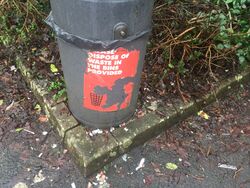
The fast-expanding forecourt chain Euro Garages had taken an interest in the sale of Little Chef. Little Chef stopped responding to customer feedback, and those who like the chain became concerned. Kout argued that their work was to save as many jobs as possible, which they had done by making the chain worth purchasing, but that their role was not to save the brand.
On 1 February 2017 Euro Garages purchased Little Chef's land and confirmed to staff that they would be closing all the branches, and replacing them with other brands such as Starbucks. The work was expected to be complete in Autumn 2017 although not all branches had confirmed plans for their future.
Ten days later, the first closure happened at Winterbourne Abbas, where the lease had expired and was not renewed.
On 9 March 2017, the conversions began, with an average of 2-7 branches closing each month. Most reopened as a Starbucks two weeks later, but Greggs and KFC were also used. Starbucks business cards were produced apologising for the closure of "this Little Chef store". Of the remaining Little Chefs, most have had their opening hours cut back from a 10pm close to 3pm.
In July 2017, rumours surfaced that Euro Garages, who were trying to expand their forecourt operations at the same time, were falling behind with their own schedule and may not be able to convert the restaurants before the end of the year. Starbucks weren't happy with Euro Garages' plans for some of the bigger buildings, but Euro Garages had only paid for one year's use of the Little Chef name (not seeing themselves as a restaurant operator), meaning an urgent rethink was needed.
After a number of concerns from staff about a lack of information, in January 2018 Euro Garages started taking down all remaining references to Little Chef, leaving behind bare walls and an outdated website; a visual metaphor for the history of the brand. Meanwhile, the surviving restaurants continued for a short while under the barely-mentioned name EG Diner.
When Little Chef was sold to Euro Garages, it had been claimed that the move secured hundreds of staff jobs. In the months that followed, many staff - some of whom had been with the brand for over 40 years - decided it was time to leave. Others were made redundant, but reported that their redundancy payment didn't acknowledge their long service. All in all, there was a sour feeling about the place.
Visitor Feedback
Visitors can leave public feedback on their experience by logging into the CommentBox app. You can do so quickly below:
Views expressed in these comments are those of the individual contributor. User accounts are managed by CommentBox.io. Registration helps prevent automated spam.
We ask the companies named to check here, but we can't force them to do so.


